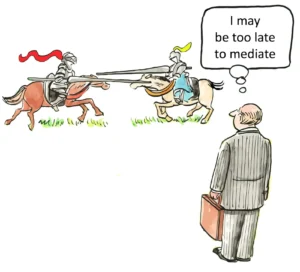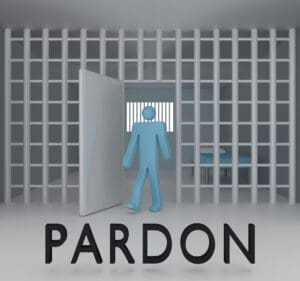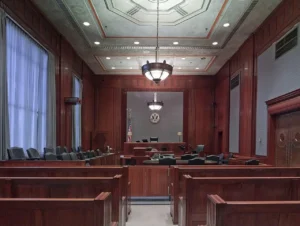The landscape of civil litigation in the United States is undergoing significant transformation as a result of recent changes to the Federal Rules of Civil Procedure (FRCP). These amendments, which have been implemented over the past several years, are reshaping the way cases are litigated in federal courts and, by extension, influencing case outcomes. The primary objectives of these changes are to promote efficiency, reduce costs, and ensure a more just and speedy resolution of disputes, as mandated by Rule 1 of the FRCP.
One of the most impactful changes has been the increased emphasis on proportionality in discovery. The 2015 amendments to Rule 26(b)(1) elevated the importance of proportionality by incorporating it directly into the definition of the scope of discovery. This change requires parties and courts to consider whether the burden or expense of proposed discovery outweighs its likely benefit, taking into account factors such as the amount in controversy, the importance of the issues at stake, and the parties’ relative access to relevant information. The practical effect of this amendment has been a more nuanced approach to discovery disputes, with courts more willing to limit overly broad or burdensome requests.
The impact of the proportionality requirement on case outcomes has been multifaceted. On one hand, it has led to more focused and efficient discovery processes, potentially reducing the overall cost and duration of litigation. This can benefit plaintiffs with meritorious claims by allowing them to reach the merits of their case more quickly and with less financial burden. On the other hand, some critics argue that the emphasis on proportionality may disadvantage plaintiffs in cases where critical evidence is primarily in the possession of defendants, particularly in complex litigation against large corporations.
Another significant change has been the amendment to Rule 37(e) regarding electronically stored information (ESI). This rule now provides a uniform standard for imposing sanctions for failure to preserve ESI, requiring a finding that a party acted with intent to deprive another party of the information’s use in litigation before severe sanctions such as adverse inference instructions or dismissal can be imposed. This change has led to a more predictable framework for addressing ESI spoliation issues, potentially reducing satellite litigation over preservation failures and allowing courts to focus more on the substantive merits of cases.
The impact of the Rule 37(e) amendment on case outcomes has been notable. It has raised the bar for imposing severe sanctions, which may make it more challenging for parties to leverage alleged spoliation into favorable settlements or case-dispositive rulings. However, it has also incentivized parties to implement more robust ESI preservation practices, potentially leading to more complete evidentiary records and fairer adjudications on the merits.
The amendments to Rule 16 regarding case management have also had a significant impact on how cases progress through the federal court system. These changes encourage more active judicial management of cases from the outset, including earlier and more robust scheduling conferences. The rule now explicitly permits the inclusion of ESI and agreements under Federal Rule of Evidence 502 in scheduling orders, promoting early discussion and resolution of e-discovery issues.
The effect of these case management changes on outcomes has been to front-load many of the critical decisions that shape the course of litigation. This early engagement can lead to more efficient resolution of disputes, either through settlement or streamlined trial preparation. However, it also requires parties to be better prepared at earlier stages of litigation, potentially increasing initial costs but with the goal of reducing overall expenses.
The 2015 amendments to Rule 34 regarding document requests have also influenced case outcomes by promoting more specific objections and clearer communication about the timing and scope of document production. The rule now requires that objections to document requests be stated with specificity and that the responding party indicate whether any responsive materials are being withheld based on objections. This change has led to more focused discovery disputes and potentially faster resolution of production issues.
The impact of the Rule 34 amendments on case outcomes is reflected in more efficient discovery processes and potentially earlier identification of key evidence. This can lead to more informed settlement negotiations and trial preparation. However, it also places a greater burden on parties to carefully craft their document requests and responses, potentially favoring litigants with more resources to devote to these tasks.
The plausibility pleading standard introduced by the Supreme Court’s decisions in Bell Atlantic Corp. v. Twombly and Ashcroft v. Iqbal, while not a direct amendment to the FRCP, has had a profound impact on civil procedure and case outcomes. This standard requires plaintiffs to plead “enough facts to state a claim to relief that is plausible on its face,” raising the bar from the previous “notice pleading” standard. The effect of this change has been to increase the likelihood of dismissal at the pleading stage for complaints that do not meet this higher threshold.
The plausibility standard has had a significant impact on case outcomes, particularly in complex litigation where plaintiffs may not have access to critical information before discovery. Critics argue that this standard has made it more difficult for plaintiffs to survive motions to dismiss, potentially closing the courthouse doors to meritorious claims. Proponents, however, contend that it helps weed out frivolous lawsuits earlier in the process, saving judicial resources and reducing the burden on defendants.
The amendments to Rule 23 regarding class actions, which took effect in 2018, have also influenced case outcomes in this important area of civil litigation. These changes clarified the standards for class certification, settlement approval, and notice to class members. The amendments require courts to consider the effectiveness of the proposed method of distributing relief to the class and processing claims when evaluating settlements. They also allow for notice to class members through electronic means, potentially increasing participation rates in class actions.
The impact of these class action amendments on case outcomes has been to promote more rigorous scrutiny of class settlements and potentially increase the fairness of outcomes for class members. The changes have also made it easier to provide notice to large classes, potentially increasing the reach and effectiveness of class actions as a tool for aggregate litigation.
The ongoing evolution of e-discovery practices, while not solely a result of FRCP amendments, continues to shape case outcomes in significant ways. The increasing volume and complexity of electronic data have led to the development of new technologies and methodologies for managing discovery, such as predictive coding and technology-assisted review. These advancements have the potential to dramatically reduce the cost and time associated with document review, potentially leveling the playing field between parties with disparate resources.
The impact of e-discovery advancements on case outcomes is multifaceted. On one hand, they can lead to more comprehensive and accurate identification of relevant evidence, potentially leading to fairer outcomes based on a more complete factual record. On the other hand, the complexity and cost of these technologies may create new disparities between parties with different levels of technological sophistication and financial resources.
The increasing use of alternative dispute resolution (ADR) mechanisms, while not directly mandated by the FRCP, has been encouraged by the rules’ emphasis on efficient resolution of disputes. Many federal courts have implemented mandatory mediation or arbitration programs for certain types of cases. The impact of these ADR programs on case outcomes has been significant, often leading to earlier settlements and avoiding the need for full-scale litigation.
The effect of increased ADR usage on case outcomes is complex. While it can lead to faster and less costly resolutions, some argue that it may disadvantage parties with less bargaining power or resources. Additionally, the confidential nature of many ADR proceedings may limit the development of public case law on important issues.
The amendments to Rule 4 regarding service of process have also had an impact on case outcomes, particularly in the context of international litigation. The rule now explicitly acknowledges the primacy of the Hague Service Convention and other internationally agreed means of service. This change has led to more predictable and efficient service of process in transnational cases, potentially reducing delays and procedural disputes that can derail litigation at an early stage.
The impact of these service of process changes on case outcomes is particularly notable in cases involving foreign defendants. More efficient and legally sound service can lead to faster progression of cases and reduce the likelihood of default judgments being set aside due to improper service.
The ongoing debate over personal jurisdiction in the wake of recent Supreme Court decisions has also influenced civil procedure and case outcomes. While not directly related to FRCP amendments, these decisions have narrowed the scope of both general and specific jurisdiction, making it more challenging for plaintiffs to sue out-of-state or foreign defendants in their preferred forums. This trend has significant implications for case outcomes, potentially altering the strategic calculus for where and how to file lawsuits.
The impact of these personal jurisdiction developments on case outcomes is particularly pronounced in mass tort and products liability cases, where the ability to aggregate claims in a single forum can significantly affect the bargaining power of plaintiffs and the efficiency of litigation.
The increasing use of multidistrict litigation (MDL) procedures for complex cases has also had a significant impact on case outcomes. While MDL is governed by a separate statute rather than the FRCP, it interacts with the rules in important ways. The consolidation of pretrial proceedings in MDLs can lead to more efficient handling of discovery and pretrial motions, potentially affecting the trajectory and outcome of large numbers of related cases.
The impact of MDL procedures on case outcomes is complex and sometimes controversial. While they can promote efficiency and consistency in the handling of similar cases, critics argue that they can also create pressure for global settlements that may not adequately account for the individual circumstances of each case.
The ongoing debate over third-party litigation funding has implications for civil procedure and case outcomes, although it is not directly addressed by the FRCP. The increasing availability of such funding has the potential to alter the dynamics of litigation by providing resources to plaintiffs who might otherwise be unable to pursue their claims. This trend raises questions about disclosure requirements, potential conflicts of interest, and the impact on settlement dynamics.
The effect of third-party litigation funding on case outcomes is still being debated. Proponents argue that it can level the playing field between well-resourced defendants and individual plaintiffs, potentially leading to fairer outcomes. Critics contend that it may encourage frivolous litigation and create ethical dilemmas for attorneys.
The intersection of civil procedure and substantive law continues to shape case outcomes in important ways. For example, the Supreme Court’s decisions on the enforceability of arbitration clauses have had a significant impact on the ability of plaintiffs to pursue certain types of claims in court, particularly in the context of consumer and employment disputes. These decisions, while not directly altering the FRCP, interact with procedural rules to affect the forum and manner in which disputes are resolved.
The impact of these substantive law developments on case outcomes is profound, often determining whether certain types of claims can be litigated in court at all or must be resolved through private arbitration. This shift can significantly affect the bargaining power of parties and the potential for public accountability through the judicial system.
The ongoing debate over judicial case management styles and their impact on case outcomes continues to evolve. While the FRCP provide a framework for case management, individual judges have significant discretion in how they apply these rules. Some judges take a more hands-on approach, actively managing discovery and encouraging settlement discussions, while others prefer a more hands-off approach, intervening only when necessary to resolve disputes.
The impact of judicial case management styles on case outcomes can be significant. More active management may lead to faster resolutions and reduced costs, but it may also be perceived as limiting the parties’ control over the litigation process. The balance between judicial efficiency and party autonomy remains a subject of ongoing debate in the legal community.
The increasing use of technology in the courtroom, while not directly governed by the FRCP, is influencing how cases are presented and decided. From electronic filing systems to virtual hearings and trials necessitated by the COVID-19 pandemic, technological advancements are changing the landscape of civil litigation. These changes have implications for access to justice, the presentation of evidence, and the overall conduct of proceedings.
The impact of courtroom technology on case outcomes is still being assessed. While it has the potential to increase efficiency and access to the legal system, it also raises concerns about the digital divide and the potential loss of important in-person dynamics in legal proceedings.
In conclusion, the ongoing changes in civil procedure, both through formal amendments to the FRCP and through evolving judicial interpretations and practices, are having a significant impact on case outcomes in federal courts. These changes reflect a continuing effort to balance the goals of efficiency, fairness, and access to justice in an increasingly complex legal landscape. As the legal system continues to adapt to technological advancements and changing societal needs, the interplay between procedural rules and substantive outcomes will remain a critical area of focus for legal practitioners, scholars, and policymakers.
Website citations:
- https://www.jonesday.com/en/insights/2015/09/significant-changes-to-the-federal-rules-of-civil-procedure-expected-to-take-effect-december-1-2015-practical-implications-and-what-litigators-need-to-know
- https://www.quinnemanuel.com/the-firm/publications/article-march-2016-how-major-changes-to-the-federal-rules-of-civil-procedure-will-impact-business-litigation/
- https://www.supremecourt.gov/orders/courtorders/frcv24_g314.pdf
- https://www.jonesday.com/en/insights/2016/09/noteworthy-trends-from-cases-decided-under-the-recently-amended-federal-rules-of-civil-procedure
- https://www.cambridge.org/core/journals/journal-of-law-and-courts/article/abs/judicial-impact-and-factual-allegations-how-the-supreme-court-changed-civil-procedure-through-the-plausibility-standard/461230BA28FE78A582563F9BE289CBA5
- https://www.lfcj.com/lcjs-expert-evidence-advocacy-results-in-improved-federal-practices-and-state-rules
- https://www.pewtrusts.org/en/research-and-analysis/reports/2023/09/how-to-make-civil-courts-more-open-effective-and-equitable
- https://www.federalrulesofcivilprocedure.org/frcp/title-i/rule-1/
- https://www.ojp.gov/ncjrs/virtual-library/abstracts/likely-consequences-amendments-rule-68-federal-rules-civil





















